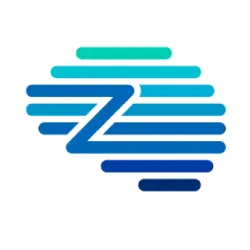Key Performance Indicators (KPIs) are foundational to measuring procurement effectiveness and driving strategic transformation. In the context of Source-to-Pay (S2P), selecting and balancing the right sourcing KPIs is essential for ensuring procurement efficiency, enhancing supplier performance, and aligning with organizational goals. This blog explores essential sourcing KPIs, best practices for implementation, and the strategic role of benchmarking within procurement.
TL;DR:
- Sourcing KPIs Span Six Key Categories: General procurement, cost, quality, delivery, inventory, and employee learning.
- Smart Metric Selection is Key: Align sourcing KPIs with business outcomes for maximum ROI.
- Benchmarking Matters: Top-performing organizations achieve POE < 1% and CRS > 2% of total spend.
- Balance Cost, Quality, Delivery: Overweighting one area reduces overall effectiveness.
- Zycus Enables Success: From sourcing KPI measurement to benchmarking, Zycus drives performance excellence.
What Are Sourcing KPIs and Why They Matter?
Source-to-Pay (S2P) spans the entire procurement process:
- Spend Management
- Strategic Sourcing
- Vendor Management
- Purchasing
- Performance Management
- Accounts Payable
Given its scope, sourcing KPIs within S2P must provide clarity and control across all these functions. Each stage generates critical data that, when analyzed through the right KPIs, helps identify bottlenecks, measure supplier performance, and optimize procurement outcomes.
Watch: S2P KPIs Webinar – Elevate ROI with Essential Metrics
Sourcing KPIs for Procurement Excellence
1. General Procurement
Purchase Operating Expense (POE) as a % of Supply Chain Purchase Dollars:
Measures the efficiency of procurement operations relative to the overall supply chain spend.
Purchasing Department Employees as a % of Company Employees:
Gauges the proportion of the workforce dedicated to procurement, offering insights into staffing levels.
2. Cost
Cost per Purchase Order (CPO)
Tracks the average expense incurred to process a purchase order, helping identify cost-saving opportunities.
Cost Avoidance
Measures the savings achieved by avoiding unnecessary expenses, such as negotiating better supplier terms.
3. Quality
Supplier Quality Rating
Evaluates the performance of suppliers based on their ability to meet quality standards consistently.
Annual Scrap Expense ($)
Quantifies costs associated with defective goods, underscoring the importance of supplier reliability.
4. Delivery
Supplier Lead Time
Monitors the time taken by suppliers to fulfill orders, influencing overall operational efficiency.
Supplier Expediting Record
Assesses the frequency and success of efforts to expedite delayed deliveries.
5. Inventory
Inventory Turnover Ratio
Indicates how often inventory is sold and replaced within a given period, highlighting stock management efficiency.
Inventory Activity
Measures the ratio of average monthly inventory relieved to total on-hand inventory.
6. Employee Learning & Growth
Number of Certified Procurement Employees
Tracks the skill development of procurement staff, reflecting the organization’s commitment to professional growth.
Training Investment per Employee vs. % Spend
Balances training costs against the proportion of procurement spend, ensuring a return on employee development.
Best Practices for Implementing Sourcing KPIs
Implementing these supply chain management performance indicators requires careful planning and a focus on avoiding common pitfalls.
1. Timely Strategy
While cost savings are crucial, overemphasizing them can lead to delays in supplier deliveries, ultimately affecting business performance. Strike a balance between cost and timeliness.
2. Right Supply Chain Management KPIs for the Right Outcomes
Consistently failing to meet supply chain management KPIs could indicate that the wrong metrics are being tracked. Choose KPIs that align with your business goals and promise realistic outcomes.
3. Balancing Cost, Quality, and Delivery
These three pillars are interdependent. Over-prioritizing one at the expense of others can lead to inefficiencies. Maintain harmony to achieve optimal results.
The Role of Benchmarking in Procurement
Benchmarking is the process of comparing your organization’s performance to that of top-performing peers to identify gaps and areas for improvement. In S2P, benchmarking helps align your operations with industry best practices, ensuring consistent progress.
Procurement Benchmarks
Procurement Operating Expense (POE) < 1% of Total Spend (TS)
World-class organizations maintain their POE at less than 1% of their total spend. This indicates that their procurement function operates as a profit center rather than a cost center.
Cost Reduction Savings (CRS) at 2% of Total Spend
CRS reflects savings achieved through better pricing negotiations. Organizations that achieve a 2% CRS see a net profit of 1% TS above their bottom line, highlighting the procurement department’s profitability.
Watch our video: Mastering Cost Reduction Strategies with Zycus
Overcoming Benchmarking Challenges
Benchmarking requires a nuanced approach. Keep these considerations in mind:
- Align benchmarks with organizations in the same industry for relevance.
- Consider the size and scale of the procurement function when setting benchmarks.
- Engage with procurement experts to ensure your benchmarks are both ambitious and achievable.
Driving Success in S2P
To unlock the full potential of your S2P process, focus on implementing the right KPIs and leveraging benchmarking insights. Here’s how Zycus can help:
-
Comprehensive S2P Solutions
Zycus offers an integrated suite of procurement solutions designed to streamline spend management, enhance supplier collaboration, and optimize performance.
-
Data-Driven Benchmarking
With Zycus’ data analytics capabilities, organizations can measure their performance against industry standards and identify opportunities for improvement.
-
Employee Development
Zycus’ tools also support skill enhancement for procurement teams, ensuring they are equipped to drive innovation and efficiency.
Ready to Maximize Procurement Performance?
Sourcing KPIs are more than just performance metrics—they’re the backbone of strategic procurement. By leveraging real-time insights, continuous benchmarking, and automation, your procurement function can drive business value and long-term growth.
Book a demo and learn how Zycus helps define, track, and benchmark your sourcing KPIs for strategic advantage.
Related Read:
- Source-to-pay vs Procure-to-pay: A Guide
- Ultimate Guide to Interpret Source-to-Pay Process Flows
- Linking Source-to-Contract & Procure-to-Pay
- 5 Key Benefits of Source-to-Pay Automation
- Source-to-Pay Digitization Diagnostic
- Webinar – Tech watch: Uncover the Potential of Intelligent Source-to-Pay.
- White Paper – Overcoming new Procure-to-Pay challenges in ANZ’s Government and Commercial Organizations
- Solution: Source to Pay Software
- Solution: Generative AI for Transforming Your Source-to-Pay Process









































